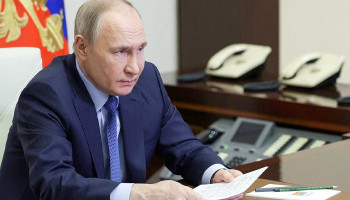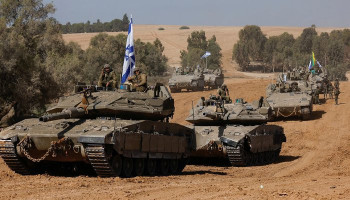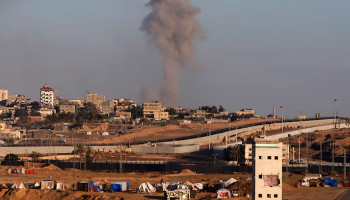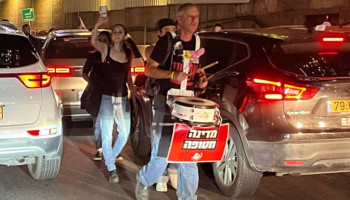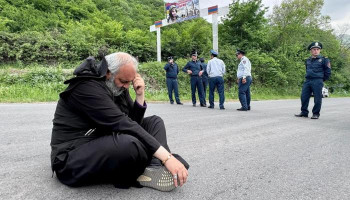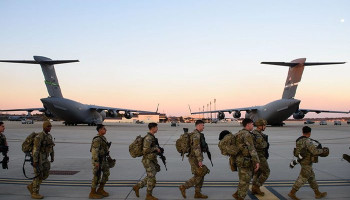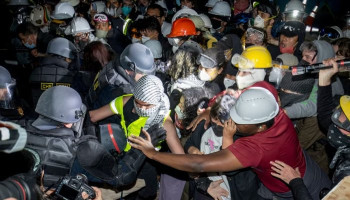Russian and Ukrainian TV viewers live on different planets
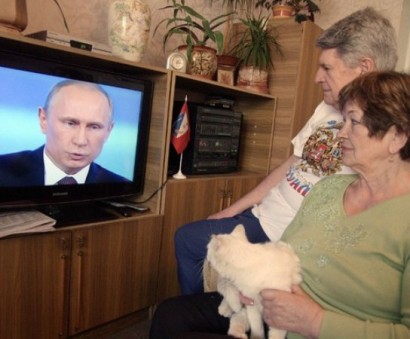 The downing of Malaysian Airlines (MH) Flight 17 over eastern Ukraine in the summer of 2014 was a horrific crime. Innocent travelers from 10 countries lost their lives, with the Netherlands losing 193 citizens. The Dutch Safety Board is due to present a comprehensive final report on the cause of the downing of MH17 in the summer. Existing circumstantial and physical evidence strongly suggests that MH17 was show down by a BUK M1 (SA 11) anti-aircraft missile fired from rebel-controlled territory in Ukraine. However, Ukrainian and Russian audiences have been provided with very different stories about who is to blame for MH17. From the outset, the Ukrainian government and Ukrainian President Petro Poroshenko’s own television stations, held Russian ‘terrorism’ responsible for the downing. Russian television stations, in contrast, drew connections between Kiev’s campaign against the rebel forces and the tragedy from the very beginning, implying Ukraine’s ‘anti-terrorist operation’ was responsible. They have spread conspiracy theories suggesting that either a Ukrainian military aircraft or a Ukrainian anti-aircraft missile shot down the plane under a false flag operation. The reputable Russian public opinion firm, the Levada Center, provides evidence that these storylines worked. They posed an open-ended question to 1,501 respondents about what caused the crash of the Boeing passenger jet over Ukraine in six Russian cities from July 18 to 24. The survey found 46 percent of respondents declared that a Ukrainian missile had destroyed the plane. Another 35 percent offered that a Ukrainian aircraft had shot it down. Just 2.7 percent suggested the Donbas militia were responsible while only eight interviewees (0.5 percent of the total) ventured that it has been downed by the Russian military. Following up on this research, we present here the views of residents of contested Ukraine. In research funded by the Political Science program of the US National Science Foundation, we organized a study of public opinion, polling 2000 respondents in six oblasts of southeast Ukraine and 750 in Crimea in December 2014. We included a question that asked respondents in both locations to choose amongst the six leading choices that emerged from Levada’s poll on MH17. Because we also asked in detail about television preferences and habits, we are able to find correlations between the attribution of blame, television watching (whether people watched TV, and how many hours they reported watching TV), news sources, and level of trust in the (respective) TV news sources. Our data on TV behavior allow us to offer a plausible explanation of these results. From the second graph, we can see that viewers who definitely or mostly trusted Ukrainian TV news blamed either the Russian military or the Donbas militants much more than those who did not trust the TV news broadcasts. These figures match up with other measures, especially of political alignments and match almost exactly the gap between those who trust and who do not trust Poroshenko. Respondents in the Ukrainian oblasts who watched Russian TV news were either more uncertain about the cause of the MH17 disaster or were reluctant to give an opinion (their ‘don’t know’ ratio was 10 points higher than those who did not watch Russian TV). In many communities in Ukraine, it is now harder to watch Russian TV because cable systems have dropped it under government pressure. One-fifth of the residents of Crimea said that they have access to and watch Ukrainian television in addition to Russian broadcasters. While access to non-Russian TV news sources, such as the Internet or Ukrainian TV has small effects on the attribution of blame, the key factor appears not to be exposure to media, but whether one is Tatar or not. This minority – about 12 percent of the population – has been under severe pressure from the Russian-installed local authorities for the past year. Their television station has been shut down, their parliamentary body closed, and their organizations banned. Despite these restrictions, Tatars do not accept the explanations of the state-controlled media, unlike other residents of the peninsula. Eighty-five percent of Russians said that television is their single main news source. Similar proportions in Ukraine and Crimea rely on television for their information about current affairs. These figures contrast sharply with the United States where the Internet is now overtaking television as the main source, especially for younger people. In Russia and Ukraine today, however, controlling television news storylines, while squashing dissenting voices, is key to promoting self-serving explanations of current events. German Chancellor Angela Merkel is supposed to have said that Russian President Vladimir Putin was living “in another world” after Crimea. These survey results suggest that a lot of Russians are living on Putin’s planet. By controlling TV, the Kremlin has been able to create a self-affirming information sphere, a Putin world with its own tabloid storylines, patriotic emotions, and heroic masculine star (Putin himself). This general condition should not be surprising to us. Russian television producers have learned from Western tabloid techniques, formulas and attitude towards facts (just as Russian political technologists, like Vladislav Surkov, learnt from the Western spinmeisters who flocked to former Russian president Boris Yeltsin and his oligarch friends in the mid 1990s). |











